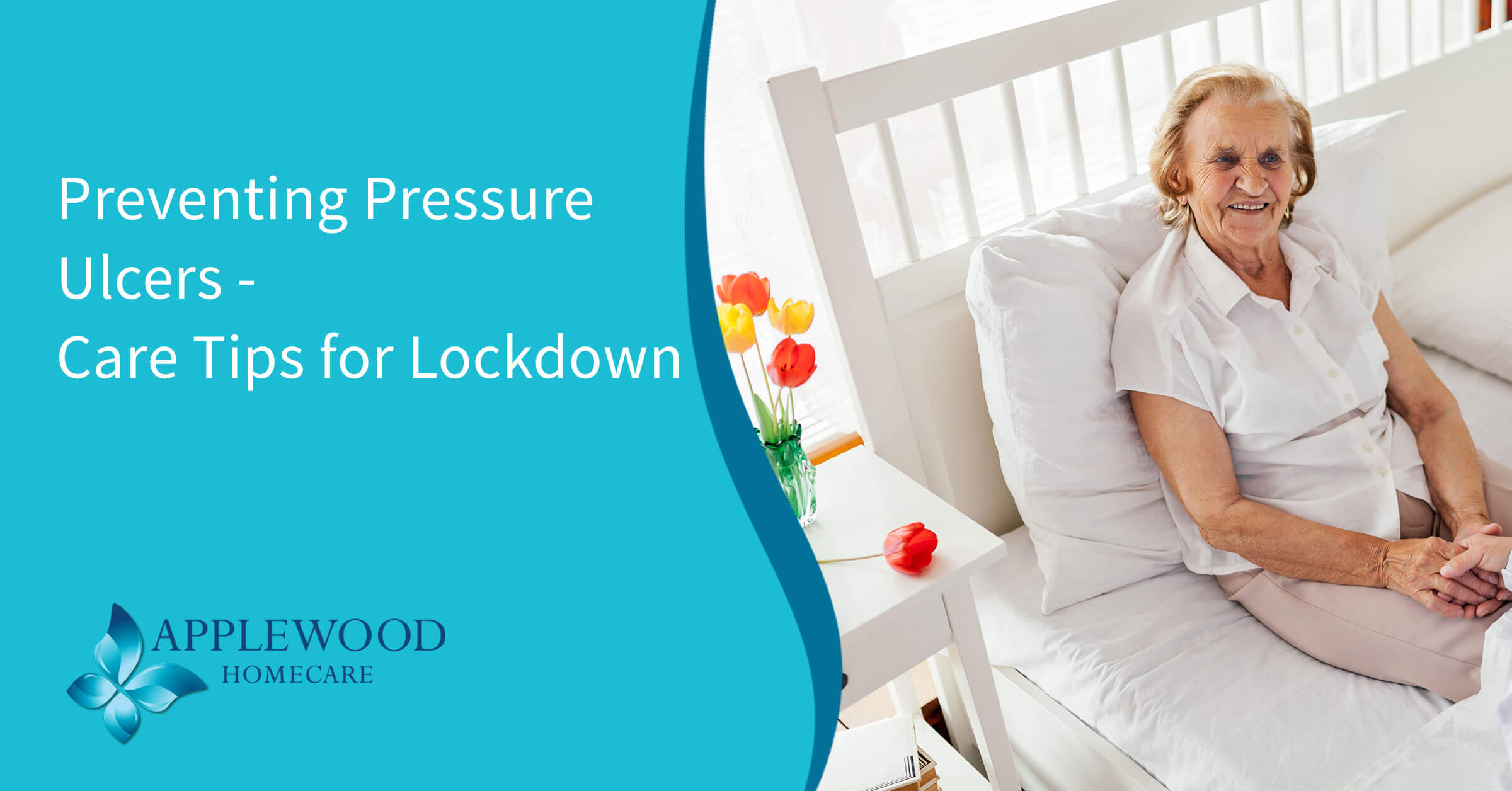
27 Jan Preventing Pressure Ulcers – Care Tips for Lockdown
Recognising and preventing pressure ulcers is very important for the care of older people, especially during lockdown. This is because people may be sitting around for longer periods with less visitors and fewer chances to get out and about for exercise.
What is a Pressure Ulcer?
A pressure ulcer (bedsore) is a skin injury caused by excessive pressure – either when a lot of pressure is over a short period of time or when less force is applied over a longer period of time. They can range in severity from a small area of discoloured skin to open wounds that expose the underlying bone or muscle.
The problem with them is the underlying tissue below may also be injured and if not cared for these cells can die and lead to serious conditions.
Complications with Pressure Ulcers
For some cases, pressure ulcers are a minor inconvenience that requires minor nursing care. Others though are a very serious type of injury that can lead to life-threatening complications, such as blood poisoning or gangrene (a condition where the body’s tissue begins to decay and die). If you don’t look after the minor injuries they can progress to be more serious and lead to complications such as:
- Septicaemia
- Infection in bones
- Amputation
- Gangrene/necrotizing fasciitis
Who can get them?
Healthy people do not get pressure ulcers because they are continuously adjusting their posture and position so that no part of their body is subjected to excessive pressure. There are people who are more prone to get them due to having particular risk factors:
- Immobility due to a clinical condition: They do not have the ability to reposition.
- Incontinence: Skin becomes more vulnerable with exposure to urine & stools.
- Poor Nutrition & Hydration: People need to get enough fluids, calories, protein, vitamins and minerals in their daily diets to maintain healthy skin and prevent tissue breakdown.
- Lack of Sensory Perception: Some conditions such as spinal cord injury, neurological disorders and other conditions can result in a loss of sensation (diabetic neuropathy, MS, Parkinson’s disease)
- Using medical devices as these can cause pressure against the skin.
- Medical Conditions Affecting Bloodflowg. diabetes
Where can pressure ulcers appear?
Pressure ulcers can develop on areas not covered by a high amount of body fat & which are in direct contact with a supporting surface. Areas on the body at risk of pressure ulcer occurrence:
Wheelchair Users: anyplace there is contact with the chair including:
- back of arms/legs
- Back of hipbone
If Bedbound: if people are in bed for long periods of time inspect
- shoulders/shoulder blades
- elbows
- back of your head
- rims of your ears
- Knees, ankles, heels or toes
- spine
- tail bone
Preventing Pressure Ulcers is Key
- Skin Inspection:
Early inspection is early detection – assess the skin and report any breakdowns to the care manager.
- Surface Assessment:
Check the surface the person is resting on. If it is too hard and not cushioned properly it means the body can’t sink into it and this means increased pressure. A support surface to match the persons needs is required especially the type that equalises pressure. An occupational therapist can give you proper advice on this.
- Keep the person moving
People need to be as active and mobile as their condition will allow. Repositioning is crucial to prevention and critical if their already exists pressure ulcers because cells can die in as little 2-4 hours. If a sore already exists it is critical that it is getting the appropriate medical attention to prevent further damage.
- Incontinence/Moisture
You need to check to make sure people are not sitting or lying on a wet surface and keep skin cleaned & moisturised.
- Nutrition/Hydration
You should ensure people have the right diet & fluid intake – this is essential for the prevention & management of pressure ulcers. This should be as much as possible through a normal diet. Supplements may be given if required – as part of the care plan, you will need to record these are being taken.
Treatment for Pressure Ulcers
Treatment includes the use of dressings, creams & gels designed to speed up the healing process & relieve pressure. Pump systems to drain the sores are used in the home instead of bringing people to the hospital. In serious cases, surgery can be recommended.
What you can do
Find out more here about caring for people at risk of pressure ulcers. Contact your G.P or your Public Health Nurse to check any skin breakdowns and to get a treatment plan in place. More useful information for caring during the pandemic can be found here.



